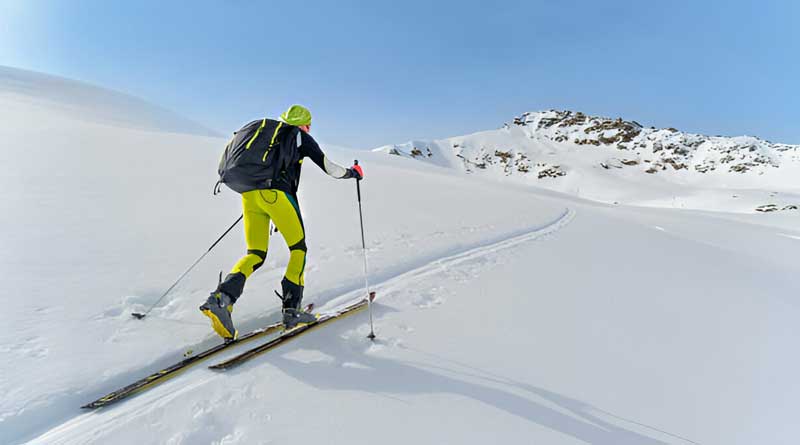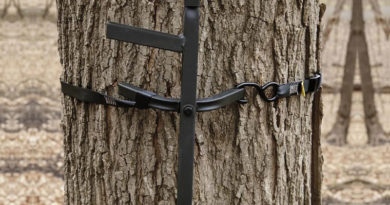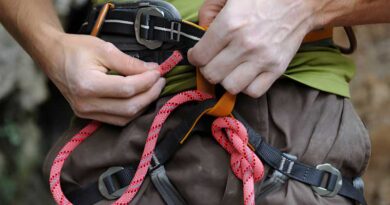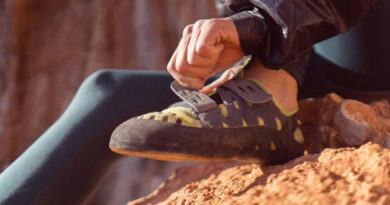Best Ski Mountaineering Backpacks of 2025
Ski mountaineering backpacks are essential for anyone tackling both skiing and climbing. These backpacks need to be strong, comfortable, and packed with features. Whether you’re heading out for a short tour or a multi-day adventure, choosing the right backpack makes a big difference. The best ski mountaineering packs balance weight, durability, and storage space. They should easily carry all your gear while allowing quick access to everything you need. This guide covers the top options available today. We’ll look at features like straps, pockets, weight distribution, and waterproofing to help you find the perfect pack for your next ski mountaineering trip.
1. Osprey Mutant 22L

-
Capacity: 22 liters
-
Dimensions: 19 x 11 x 8 inches
-
Weight: 1.8 lbs
-
Hydration reservoir compatible (sold separately)
The Osprey Mutant 22L is a compact and versatile backpack designed for ski mountaineering enthusiasts. Its lightweight design makes it ideal for shorter backcountry trips or day excursions. The front panel has easy access for your gear, and there’s a dedicated avalanche gear pocket to keep your safety tools accessible. Its streamlined design makes it perfect for moving fast without sacrificing storage capacity.
The adjustable harness system ensures comfort, even during strenuous ascents, and the durable materials hold up well against rough mountain conditions. Although the 22L capacity is on the smaller side, it’s perfect for carrying only the essentials such as a water bottle, an extra layer, and safety gear. It’s a great option for those who prioritize minimalism but still need a well-organized bag.
Pros:
-
Lightweight and compact
-
Multiple access points for gear
-
Comfortable harness system
-
High-quality, durable construction
Cons:
-
Limited storage capacity
-
No built-in hydration system
2. OutdoorMaster Ski Backpack

-
Capacity: 30 liters
-
Weight: 1.9 lbs
-
Features: Ski and snowboard carry straps
-
Hydration reservoir compatible
The OutdoorMaster Ski Backpack offers an affordable option for skiers and snowboarders who need to carry their gear efficiently. With a 30L capacity, it’s spacious enough to fit all your essentials, including extra clothing, food, and safety equipment. The design includes dedicated compartments for goggles, avalanche gear, and a hydration reservoir, which are essential for longer ski trips.
This backpack stands out due to its versatility and comfort. The adjustable straps and ergonomic back panel ensure a comfortable fit, while the snowboard and ski carry systems let you easily transport your gear without needing a separate bag. However, it’s a bit bulkier than some lighter options, making it less ideal for minimalists.
Pros:
-
Affordable price point
-
Ski and snowboard carry systems
-
Hydration reservoir compatible
-
Good comfort and organization
Cons:
-
Bulkier than other options
-
Not as durable as higher-end models
3. WoneNice 50L Pack

-
Capacity: 50 liters
-
Weight: 3.1 lbs
-
Material: Water-resistant nylon
-
Adjustable straps for comfort
The WoneNice 50L Pack is a budget-friendly, large-capacity option for skiers who need to carry more gear. With 50 liters of space, this backpack can handle longer ski trips or multi-day excursions, providing ample room for extra layers, food, and equipment. Its water-resistant nylon material provides good protection against snow and light rain.
Although the bag’s larger size means it’s not as compact as some other ski-specific backpacks, it compensates with comfort and organization. The padded shoulder straps and hip belt make carrying heavy loads more manageable, but the overall weight may be too much for those who prefer a lighter setup. Still, it’s a solid option for those who need to carry plenty of gear without breaking the bank.
Pros:
-
Large capacity for extended trips
-
Comfortable padded straps
-
Affordable
-
Good water resistance
Cons:
-
Heavy for a ski backpack
-
Not as specialized for skiing gear
4. Naturehike 65L Backpack

-
Capacity: 65 liters
-
Weight: 3.7 lbs
-
Material: Ripstop polyester with waterproof coating
-
Multiple compartments for gear
Review:
The Naturehike 65L Backpack is a great choice for those who need a large and versatile pack for ski mountaineering. With a massive 65L capacity, this backpack can carry everything you need for extended backcountry trips, including tents, sleeping bags, and extra clothing. The ripstop polyester construction with a waterproof coating ensures that your gear stays dry even in harsh conditions.
Despite the large size, the Naturehike pack is relatively comfortable to wear, thanks to its adjustable harness system. The multiple compartments and straps allow for easy organization of gear, making it simple to access essential items quickly. While it’s more suited for overnight or multi-day trips, its bulk may be a drawback for those seeking a lighter, more compact pack for day trips.
Pros:
-
Huge capacity for extended trips
-
Waterproof construction
-
Multiple compartments for easy organization
-
Comfortable adjustable harness
Cons:
-
Heavy and bulky
-
Overkill for short trips
5. Dakine Heli Pro

-
Capacity: 20 liters
-
Weight: 1.7 lbs
-
Features: Ski and snowboard carry straps
-
Hydration system compatible
The Dakine Heli Pro is a sleek and functional backpack designed for skiers and snowboarders who want to carry only what they need for a day in the mountains. The 20L capacity is just right for a daypack, providing space for safety gear, an extra layer, and a water bottle without feeling overstuffed. The ski and snowboard carry straps are easy to use, making it convenient to carry your equipment hands-free.
The lightweight construction of the Heli Pro ensures that you can move quickly without being weighed down, and its minimalistic design means there’s no wasted space. The hydration system compatibility is a nice touch, allowing you to stay hydrated without needing to stop and unpack your gear. However, it may not be large enough for those who want to carry extra gear for more than a day.
Pros:
-
Lightweight and compact
-
Ski and snowboard carry straps
-
Hydration system compatible
-
Sleek, minimalist design
Cons:
-
Limited storage capacity
-
No dedicated compartments for avalanche gear
6. Osprey Glade 12L

-
Capacity: 12 liters
-
Weight: 1.4 lbs
-
Ski and snowboard carry system
-
Compatible with hydration reservoirs
Review:
The Osprey Glade 12L is a great option for skiers and snowboarders who need a lightweight, compact daypack for short trips. With a 12L capacity, it’s perfect for carrying just the essentials, such as an extra layer, water, and your avalanche gear. The ski and snowboard carry system is straightforward and makes it easy to bring your gear along for the ride.
While the 12L capacity limits what you can bring, it’s an ideal choice for those who prefer a minimalist approach. The Glade’s lightweight design and comfortable shoulder straps make it easy to carry, even when fully loaded. It’s a perfect option for those who don’t need to haul a lot of equipment but want a reliable pack for the essentials.
Pros:
-
Extremely lightweight and compact
-
Comfortable fit
-
Ski and snowboard carry system
-
Ideal for minimalist trips
Cons:
-
Very small capacity
-
Limited organization options
7. Osprey Aether 65L

-
Capacity: 65 liters
-
Weight: 4.6 lbs
-
Material: Durable nylon ripstop
-
Adjustable harness and hip belt
Review:
The Osprey Aether 65L is a high-capacity, durable backpack that’s perfect for those embarking on multi-day ski mountaineering trips. The 65L capacity gives you ample space for carrying all your necessary gear, including extra clothing, food, and safety equipment. The nylon ripstop construction ensures that the pack can handle rough conditions and heavy loads.
The Aether’s adjustable harness and hip belt make it highly customizable for comfort, even when fully loaded. The backpack’s design is focused on backcountry skiing needs, with specific compartments for avalanche safety equipment and a hydration reservoir pocket. While it’s a bit heavy for a day pack, the Aether is an excellent choice for longer excursions that require a large amount of gear.
Pros:
-
Large capacity for extended trips
-
Comfortable and adjustable harness
-
Durable, high-quality construction
-
Ideal for carrying heavy loads
Cons:
-
Heavy compared to smaller packs
-
Overkill for day trips
How to Choose Ski Mountaineering Backpacks
Ski mountaineering is an exciting and challenging sport that combines alpine skiing with mountaineering. Skiers not only have to navigate difficult terrains but also carry essential gear for safety, comfort, and performance. One of the most crucial pieces of equipment for ski mountaineering is the backpack. Ski mountaineering packs are specifically designed to carry all the necessary equipment while maintaining comfort, stability, and functionality. This article will guide you through the process of choosing the right backpack based on factors such as capacity, features, fit, and material.
1. Understanding the Basics of Ski Mountaineering Backpacks
A ski mountaineering backpack differs from a regular skiing backpack in terms of design and functionality. Ski mountaineering requires carrying a range of items such as avalanche safety gear, extra clothing, tools for climbing, hydration systems, and sometimes even skis or snowboards when transitioning between snow and rock. As such, these backpacks are designed to be more durable, lighter, and equipped with specialized compartments for easy access to gear.
2. Capacity: Finding the Right Size
One of the first factors to consider when choosing a backpack is capacity. The right size depends on the duration of your trip and the amount of gear you need to carry.
-
Day Trip Backpack (20–35 liters): For a short ski mountaineering excursion or a day trip, a backpack with a 20–35 liter capacity is generally sufficient. These packs offer enough space to carry essentials like a first-aid kit, water, snacks, avalanche safety gear (transceiver, probe, shovel), and a light jacket. They tend to be compact and lightweight, making them ideal for short, fast-paced activities.
-
Multi-day Trip Backpack (35–50 liters): For longer trips that require more gear and overnight stays, you’ll need a larger backpack, typically in the 35–50 liter range. These packs allow you to carry extra layers, sleeping bags, tents, food, and additional climbing gear without being too bulky. They also often feature additional compartments or attachment points to hold skis, snowshoes, or a rope.
-
Over 50 liters: For extended expeditions in remote areas, packs exceeding 50 liters might be required. However, larger backpacks can become cumbersome and heavy, which may affect mobility. These packs are generally only necessary for serious ski mountaineers heading into alpine terrain for extended periods of time.
3. Fit and Comfort: Ensuring Proper Support
The fit of your ski mountaineering backpack is just as important as its capacity. A poor fit can lead to discomfort and fatigue, which can have a negative impact on performance. When choosing the right fit, consider the following:
-
Hip Belt and Shoulder Straps: Look for backpacks with padded hip belts and adjustable shoulder straps. The hip belt helps distribute weight evenly across your body, relieving pressure from your shoulders and back. It’s important that the belt fits snugly around your waist, as this will provide the necessary support for carrying heavy loads. Shoulder straps should be adjustable to allow a custom fit for your body size.
-
Back Panel: A padded or ventilated back panel will provide comfort and support during long treks. Additionally, the back panel should be designed to allow for airflow to prevent excessive sweating and discomfort. Some models come with a rigid back panel that provides extra stability, while others use a more flexible panel for added movement.
-
Torso Length: A good fit also involves selecting the right torso length for your body. A pack that is too long or too short can cause pressure points, making it uncomfortable to wear for extended periods. Many ski mountaineering packs come with adjustable torso lengths to accommodate different body shapes.
4. Ski and Snowboard Carrying Options
One of the most important features of a ski mountaineering backpack is its ability to carry skis or a snowboard. Depending on your preferences and the type of terrain you will be traversing, the carrying system should be chosen carefully. Common carrying options include:
-
A-Frame Carry: This is the most common and stable method for carrying skis. The skis are placed in an “A” shape with the tips facing outward and the tails placed along the side of the pack. This method is suitable for skiers who need to quickly transition from skiing to hiking or climbing.
-
Diagonal Carry: In this option, skis are carried diagonally across the back of the pack, with the tips near one shoulder and the tails near the opposite hip. It allows for quicker access and is typically used when the skier is moving through tight spaces or ascending steep terrain.
-
Vertical Carry: Less common, vertical carry involves carrying skis or a snowboard vertically on the pack’s back. While this method can be more convenient for snowboarders, it can also be less stable compared to the other methods and may result in more swinging during movement.
-
Board Carry: For snowboarders, backpacks can also feature specific carrying systems designed for boards. The board can be carried horizontally or diagonally, and it is essential to check that the system is secure and stable.
5. Features and Functionality: What to Look For
When choosing a ski mountaineering backpack, additional features can significantly enhance the backpack’s functionality. Consider the following features when comparing options:
-
Hydration System Compatibility: Ski mountaineering requires staying hydrated, especially at high altitudes. Many backpacks come with a built-in hydration sleeve or a port to accommodate a hydration bladder. This allows you to easily drink while on the move, without having to stop and open your pack.
-
Avalanche Safety Gear Storage: Dedicated compartments for avalanche safety gear, such as shovels, probes, and avalanche transceivers, are essential. Make sure the pack has quick-access storage for these items, as you may need to use them in an emergency situation.
-
Helmet and Gear Attachment Points: If you need to carry a helmet or other specialized gear, look for a pack with gear loops or straps. These can be used to attach a helmet, rope, or climbing tools to the outside of the pack for easy access.
-
Compression Straps: Compression straps help to secure your gear and reduce the overall volume of the pack. These straps can also help stabilize the load, keeping everything tightly packed and preventing shifting during movement.
-
Emergency Whistle: Many packs come equipped with a small emergency whistle, which can be a lifesaver in the event of an avalanche or other emergency. It’s a small but vital feature for safety-conscious ski mountaineers.
6. Material and Durability: Weather and Abrasion Resistance
The material of a backpack should be robust enough to withstand the harsh conditions encountered in alpine environments. Look for backpacks made from high-denier nylon or other durable, abrasion-resistant fabrics. These materials can handle the stress of being exposed to sharp rocks, ice, and snow. Additionally, ensure that the material is water-resistant or comes with a waterproof coating to protect your gear from snow and rain.
7. Price and Brand: Investing in Quality
Ski mountaineering backpacks can vary greatly in price. While it’s tempting to go for a budget-friendly option, it’s crucial to invest in a high-quality, durable pack that can handle the demanding nature of ski mountaineering. Trusted brands such as Osprey, Deuter, Arc’teryx, and Black Diamond are well-known for producing top-quality backpacks.
When choosing a backpack, always prioritize quality and functionality over cost. A good backpack can make a significant difference in your comfort and performance, and it is worth investing in a product that will last for years.
Conclusion
Choosing the right ski mountaineering backpack is essential for a successful and safe adventure. By considering factors such as capacity, fit, features, material, and carrying options, you can ensure that your pack will meet the demands of the terrain and provide comfort during long days in the mountains. Whether you’re a seasoned mountaineer or a beginner, investing in the right backpack will enhance your experience and help you carry your gear efficiently and safely.




